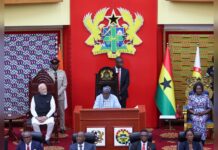The European Central Bank’s monetary policy has undergone a peculiar change during the pandemic. Something other than the goal of price stability appears to be guiding the bank’s overall approach, suggesting that it has adopted a new mandate without publicly announcing it.
Since the start of the COVID-19 crisis, the ECB has succeeded in closing the gap between northern and southern member states’ borrowing costs, bringing eurozone North-South yield spreads to historic lows. And with Europe facing multiple threats to its unity – from Donald Trump’s administration and Vladimir Putin’s revanchist Kremlin to an increasingly assertive China and homegrown populists – policymakers have effectively adopted “spread narrowing” as a new mandate.
ECB President Christine Lagarde and her colleagues seem to recognize that ensuring European unity and solidarity is the most important objective an institution like the ECB can pursue at this critical moment. Though no one at the bank is likely to admit it, there is little question that they are now in the business of holding down spreads.
By purchasing massive quantities of periphery member-state bonds through its quantitative-easing policy and the Pandemic Emergency Purchase Program (PEPP), the ECB has driven up the demand for riskier bonds in the market. As a result, yields on ten-year sovereign bonds issued by Portugal and Spain have dropped below zero, and Italy’s bond yields have fallen to a decade low.
Lagarde’s leadership team has had much more success closing the North-South interest-rate spread than it has in meeting the ECB’s price-stability mandate of “below, but close to 2%” annual inflation. Perhaps this reflects the ECB Governing Council’s recognition that the inflation target is unattainable without more fiscal stimulus.
Of course, even if the ECB has adopted a “what’s the use?” attitude with respect to the inflation target, that does not explain its persistent refusal to cut the discount rate even in the face of one of the biggest shocks to economic activity in living memory. At the Governing Council’s most recent meeting, it refused to cut the discount rate from -0.5%, thereby creating the effect of a counterproductive rate increase. On balance, this approach has catapulted the euro to its highest levels since 2018, and caused eurozone inflation to plunge even further from the ECB’s target in what is now the fourth consecutive month of falling prices.
The unstated reason for this strategy is plain as day: The ECB is focused on improving conditions for banks in the eurozone’s periphery countries and believes that cutting the discount rate would compound these banks’ problems. Despite significant improvements in their financial health, banks in periphery countries remain very concerned about the fallout of the current crisis. But this problem should sort itself out as southern economies recover.
For the time being, then, the prudent response to the ECB’s neglect of its inflation mandate is, “Who cares?” Narrowing North-South yield spreads is far more important for Europe’s survival and future prosperity than are a few ticks on a price index.
After all, just look at the results. The new mandate that dare not speak its name has prevented the euro from unraveling as a result of the pandemic – a possibility that many feared early on. It has put the eurozone on a rock-solid footing, deepening European financial integration and solidarity (which has made the weakest members’ bonds increasingly attractive to international investors) just in time for the second wave of infections.
Spread-narrowing policies were perhaps the most important actions taken at the Governing Council’s meeting last week, when it launched a fresh round of stimulus, promising to buy €500 billion ($608 billion) more in bonds by expanding the PEPP from €1.35 trillion to €1.85 trillion. At the same time that it shifts focus from its inflation target, the ECB is acting with steady purpose when it comes to spread stability.
Lagarde’s own role in the ECB’s new direction has been somewhat ambiguous. In March, she remarked at an ECB press conference that it was not the bank’s job to narrow the gap in borrowing costs between stronger and weaker eurozone economies. But that comment triggered a selloff in the bond markets, forcing ECB Chief Economist Philip Lane to get on the phone with leading financial institutions to ensure that there was no misunderstanding about ECB policy.
For her part, Lagarde’s position now is very different from the one she expressed earlier in the year. In fact, she sounds much less like her March self, and more like French President Emmanuel Macron, for whom support of the periphery countries and North-South integration has always been a matter of primary concern.
Whatever her initial position, Lagarde recovered quickly and has become the leader the ECB needs. Macron’s fingerprints may or may not be all over the new de facto spread-narrowing strategy, but myopic technocrats no longer have exclusive control over ECB policymaking. Politicians with a deep understanding of what Europe needs are having a tangible influence, and the overall results are more than satisfactory.
Melvyn Krauss is a senior fellow at Stanford University’s Hoover Institution.
Copyright: Project Syndicate, 2020.
www.project-syndicate.org










